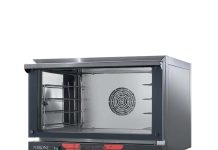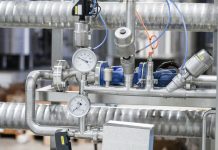Among the achieved results, which are the most satisfactory ones from your point of view?
In fact, we obtained positive results for all analysed issues; and we located approaches that can be easily implemented. Ample and articulated studies were conducted, and in the meeting in Bolzano the most promising results were presented, which can be more easily and quickly implemented on fourth range apples. However, in all areas solutions have been identified that will lead to appreciable improvements of the production processes: from post-harvest, with the prevention of plant diseases using natural antagonists, to various approaches directed to extend the shelf life.” Next to the use of UV-light, in fact, even treatment with carbon dioxide in dense phase, use of essential oils or lactic bacteria, and blending of ascorbic acid and sucrose mixtures in low pressure, provided effective results in preserving product quality and extending its shelf-life.
 Did you expect better results from other studies?
Did you expect better results from other studies?
In fact, I expected that sunlight would produce only positive effects, without side-effects. It was demonstrated, however, that a high exposure to light favours the photochemical oxidation of polyphenols, and the consequent browning of the apple surface, with effects opposite to those desired. For this reason a compromise had to be located, in order to reduce by one hundred times the bio-burden while containing the browning effect.
Can the results of your research find immediate implementation, or further tests are required?
Most of the results can be already applied: for several solutions, as the use of essential oils and microbial antagonists (lactic bacteria), both laboratory tests and small production tests have been carried out. In general, these technologies or methods are already available on the market, and they are already used in other production sectors. As with UV-light, we obtained excellent results with standard lamps, similar to those already in use in some facilities for the decontamination of worktables.
 Are the costs for these solutions sustainable even for small and medium companies?
Are the costs for these solutions sustainable even for small and medium companies?
Yes, even the economical sustainability of the proposed approaches has been assessed, and it resulted that they do not significantly affect production costs. This is possible because these solutions are easy to find on the market, and they are of low cost, both in terms of purchase price and operating cost. As, for instance, lactic bacteria or essential oils, but even the use of standard UV-lamps, which are easily available and not particularly expensive. All of them are applicable technological solutions, although they are not yet specifically directed to the fourth range”. The published results show even that costs decrease with higher production, and become equivalent to those of currently used approaches only if production exceeds a specific limit (more than 3 million bags per year for small production lines, more than 7 million bags for large lines). A market survey assessed the possibility of informing consumers on the technological solutions implemented during production. To assess consumer perception of these innovations, and to estimate the potential market shares, an interview was carried out on a sample of approx. 600 persons using a questionnaire. The interviewed were required to give an evaluation on various properties of a potential fourth range product (apple or fruit salad). The attributes that were taken into account were: presence of an ecolabel with or without clear description of the implemented innovations (sterilisation with light or essential oils), duration of the shelf-life (3 or 6 days) and price. “The survey showed a clear market segmentation” explains Mrs. Nicoli “which may allow the implementation of specific marketing strategies. Two defined clusters were identified: a more conventional group, not interested in the extension of the shelf life and not positively impressed by the presence of an ecolabel or the indication of the implemented methods (only discrimination for this category appears to be the price); and a cluster of innovators, likely to be addressed by the new product, showing considerable appreciation for the presence of the ecolabel and the extended shelf-life through the implementation of innovative and sustainable methods.
Did you already plan further developments of this project?
We intend to continue these studies, but things will very much depend on the possibility of attracting additional funding. We are already continuing our studies concerning the development of new technologies suitable for extending the shelf-life of food products. For instance, we are working on dense phase carbon dioxide with a small self-made plant, which can be used even on solids. From a plant engineering perspective, this is a particularly interesting approach, even for its simplicity.



